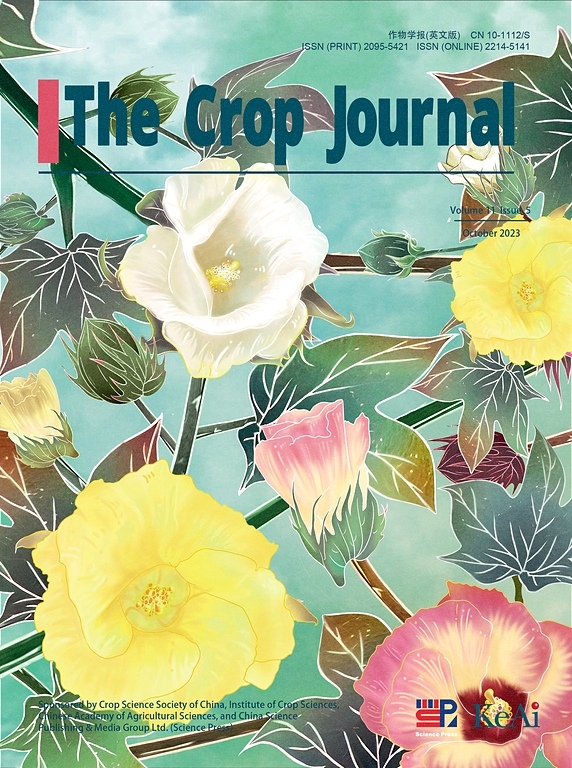Fine mapping and transcriptome sequencing reveal candidate genes conferring all-stage resistance to stripe rust on chromosome arm 1AL in Chinese wheat landrace AS1676
Abstract
Stripe rust, caused by Puccinia striiformis f. sp. tritici (Pst), threatens wheat production worldwide, and resistant varieties tend to become susceptible after a period of cultivation owing to the variation of pathogen races. In this study, a new resistance gene against Pst race CYR34 was identified and predicted using the descendants of a cross between AS1676, a highly resistant Chinese landrace, and Avocet S, a susceptible cultivar. From a heterozygous plant from a F7 recombinant inbred line (RIL) population lacking the Yr18 gene, a near-isogenic line (NIL) population was developed to map the resistance gene. An all-stage resistance gene, YrAS1676, was identified on chromosome arm 1AL via bulked-segregant exome-capture sequencing. By analyzing a large NIL population consisting of 6537 plants, the gene was further mapped to the marker interval between KA1A_485.36 and KA1A_490.13, spanning 485.36–490.13 Mb on 1AL. A total of 66 annotated genes have been reported in this region. To characterize and predict the candidate gene(s), an RNA-seq was performed using NIL-R and NIL-S seedlings 3 days after CYR34 inoculation. Compared to NIL-S plants, NIL-R plants showed stronger immune reaction and higher expression levels of genes encoding pathogenesis-associated proteins. These differences may help to explain why NIL-R plants were more resistant to Pst race CYR34 than NIL-S plants. By combining fine-mapping and transcriptome sequencing, a calcium-dependent protein kinase gene was finally predicted as the potential candidate gene of YrAS1676. This gene contained a single-nucleotide polymorphism. The candidate gene was more highly expressed in NIL-R than in NIL-S plants. In field experiments with Pst challenge, the YrAS1676 genotype showed mitigation of disease damage and yield loss without adverse effects on tested agronomic traits. These results suggest that YrAS1676 has potential use in wheat stripe rust resistance breeding.

 求助内容:
求助内容: 应助结果提醒方式:
应助结果提醒方式:


